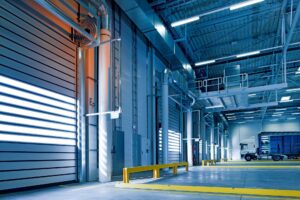
Top 10 Things to Consider Before Investing in a Steel Building
Steel buildings are gaining traction in various sectors, from agriculture and storage to commercial and industrial applications. Their durability, versatility, and cost-effectiveness make them a popular choice for those looking to invest in long-lasting structures. However, before you jump into the world of steel buildings, there are essential factors you should consider.
COMPARE QUOTES- Purpose and Functionality: Define the primary purpose of your steel building. Are you using it for storage, as a workshop, office space, or perhaps as a retail store? Knowing the building’s intended purpose will guide the design, size, and features you need.
- Local Building Codes and Regulations: Each municipality or region may have its own building codes and zoning regulations. These codes will influence the design, location, and sometimes even the color of your steel building. Always check with local authorities before finalizing your plans.
- Site Preparation and Foundation: Steel buildings require a solid foundation, usually made of concrete. The site needs to be leveled and prepared correctly to ensure the building’s stability. You may need to factor in additional costs for excavation, grading, or any other site preparation tasks.
- Size and Design: Consider the dimensions you’ll need — both immediate and future requirements. Think about height, width, and length. It’s often more cost-effective to account for potential expansion needs now rather than expanding or modifying the building later.
- Building Components: Steel buildings can come with a variety of components, such as windows, doors, ventilation systems, and insulation. Determine which components are crucial for your needs and which can be considered add-ons or future additions.
- Weather Considerations: If you’re in an area prone to heavy snowfall, strong winds, or seismic activity, you’ll need to ensure your steel building is designed to withstand these conditions. This might mean reinforced walls, a particular type of roof, or other specialized features.
- Insulation: A well-insulated steel building can save you a significant amount on energy bills. It’s vital to decide what kind of insulation you want, considering factors like R-value, moisture resistance, and fire safety.
- Maintenance: While steel buildings are low maintenance compared to other structures, they’re not entirely maintenance-free. Consider potential upkeep needs, such as repainting, checking for rust, or cleaning gutters and drains.
- Aesthetics: Even though it’s a steel building, it doesn’t mean it can’t be visually appealing. Modern steel buildings offer various finishes, facades, and design elements that can make them stand out or blend in, depending on your preference.
- Budget and Financing: Understand the total costs involved, from design and manufacturing to delivery and installation. Factor in potential overruns or additional features you might decide on during the construction process. Investigate financing options or payment plans offered by steel building providers.
Investing in a steel building is a significant decision that can offer numerous benefits. By taking the time to consider these essential aspects, you’ll ensure that your investment meets your needs, adheres to local regulations, and provides value for many years to come.
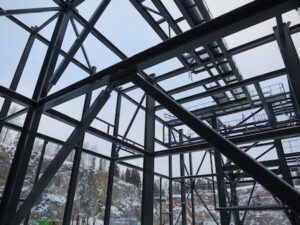
Different Types of Steel Buildings: Choosing What’s Right for You
As the popularity of steel buildings continues to rise, so does the diversity in their design and functionality. Various types are tailored to meet different needs and purposes. Below, we break down some of the most common types of steel buildings and offer insights to help you decide which might be the best fit for your project.
COMPARE QUOTESArch Steel Buildings:
Often referred to as Quonset huts, these are characterized by their semi-circular, arch-like shape. They are particularly durable and can resist some of nature’s most stringent conditions, including high winds and heavy snow loads. They’re typically used for agricultural purposes, storage, and even residential homes.
Straight-Walled Buildings:
These are the most common type of steel building and can be used for virtually any purpose. Their straight wall design provides maximum usable space, making them a favorite for commercial and industrial applications.
Modular Steel Buildings:
These buildings are designed in sections or modules. They’re manufactured off-site and then assembled at the desired location. This design allows for a lot of flexibility in terms of size and layout, making them ideal for offices or any application where customization is key.
Clear Span Buildings:
These structures are free of interior columns, offering uninterrupted space. They’re often used for large gymnasiums, agricultural purposes, or warehouses where open space is crucial.
Multi-Span Steel Buildings:
These have internal columns and are suitable for very large structures where clear span designs are not feasible. They are commonly used in industrial settings or for large commercial applications.
Hybrid Structures:
As the name suggests, hybrid steel buildings use a combination of steel framing and other construction materials, such as wood or concrete. They provide the flexibility of traditional construction methods while still benefiting from the strength and durability of steel.

How to Choose the Right Steel Building for Your Needs:
- Determine Your Needs: This step is fundamental. Are you looking for a warehouse, an office space, a residential home, or maybe a barn? Your primary purpose will be the main guiding factor.
- Consider Your Budget: Some steel buildings are more cost-effective than others. For instance, arch steel buildings might be more affordable than modular designs. Understand your budget constraints and work within them.
- Future Requirements: Think about scalability. If you anticipate needing more space in the future, opt for designs that can be easily expanded or modified.
- Aesthetics and Design: While functionality is paramount, the visual appeal is also important. Consider the overall design, available customization options, and how the structure will fit into its surroundings.
- Check Local Regulations: Always ensure the type of steel building you choose complies with local building codes and zoning regulations. Some areas might have restrictions on certain designs.
- Seek Expert Advice: Talk to experts or consultants in the field. Their insights can be invaluable in guiding you to make the right choice.
The landscape of steel buildings is vast and varied. Each type offers unique advantages, so understanding your specific needs and constraints is crucial. With careful consideration and planning, you’ll find a steel building design that perfectly suits your objectives.
COMPARE QUOTESDifferent Sizes of Steel Buildings: Finding the Right Fit
When you think about steel buildings, the idea of giant warehouses or industrial complexes might come to mind. While these are indeed popular applications, steel structures range in size from compact storage sheds to sprawling industrial facilities. Here’s a breakdown of the various sizes you can choose from and how to determine the best fit for your needs:
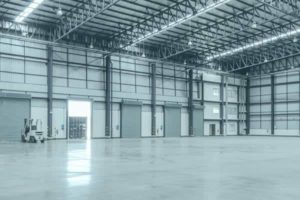
Mini Steel Buildings (under 1,000 sq. ft.):
-
- Applications: Typically used as storage sheds, personal workshops, small retail boutiques, or hobby rooms.
- Pros: These are cost-effective, can fit into smaller plots of land, and often do not require intricate foundation work.
- Cons: Limited space may not accommodate larger equipment or future expansion.
Small Steel Buildings (1,000 – 5,000 sq. ft.):
-
-
- Applications: Ideal for small businesses, auto repair shops, modest warehouses, or horse barns.
- Pros: They provide a balance of affordability while offering more space than mini steel buildings.
- Cons: Still may not be suitable for larger enterprises or those looking to scale quickly.
-
Medium Steel Buildings (5,000 – 30,000 sq. ft.):
-
- Applications: Suited for medium-sized businesses, larger warehouses, gymnasiums, and community centers.
- Pros: Ample space for multiple uses, possibility for internal divisions or multi-purpose areas, and more design flexibility.
- Cons: Requires more land and possibly a more complicated foundation.
Large Steel Buildings (30,000 – 50,000 sq. ft.):
-
- Applications: Large manufacturing facilities, distribution centers, airplane hangars, and agricultural facilities.
- Pros: Can house complex operations, offer space for machinery and equipment, and allow for significant internal customization.
- Cons: Higher initial investment and more extensive construction timelines.
Mega Steel Buildings (over 50,000 sq. ft.):
-
- Applications: Massive manufacturing plants, exhibition centers, and large-scale commercial operations.
- Pros: Immense space catering to specialized needs, ability to incorporate advanced infrastructure, and potential for significant customization.
- Cons: Requires extensive planning, considerable investment, and long construction timelines.
Factors to Consider When Choosing the Size:
- Current Needs vs. Future Expansion: Understand your immediate requirements, but also think ahead. If your business or purpose is poised for growth, you might want to invest in a larger structure to avoid relocating or undergoing expansion soon.
- Land Availability: The plot of land you have or plan to purchase will dictate the size of your steel building. Ensure you leave enough space for parking, landscaping, or future expansions.
- Budget: Larger buildings naturally cost more. Factor in not just the cost of the building, but also foundation work, interiors, utilities, and any customization.
- Intended Use: The purpose of your steel building plays a pivotal role. A manufacturing facility will have different space requirements than a community center or a retail store.
- Local Regulations: Some areas may have restrictions on building sizes based on zoning laws, environmental factors, or aesthetic concerns. Always check with local authorities before finalizing your plans.
The range of steel building sizes ensures there’s a solution for almost every need. By assessing your requirements, budget, and constraints, you can find the perfect size that offers value, functionality, and room for growth.
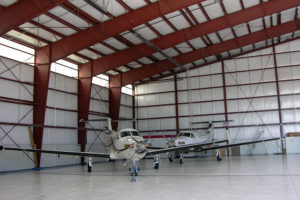
Most Common Uses for Your Steel Building Investment
Steel buildings are incredibly versatile and are gaining popularity for a variety of purposes. Whether you’re looking to invest in a space for business, personal, or communal reasons, there’s a steel structure that’s just right for you. Here are some of the most common uses for steel buildings:
Commercial and Industrial Purposes: These are perhaps the most traditional uses for steel buildings. Due to their durability and spacious interiors, they are ideal for manufacturing plants, workshops, and large-scale storage warehouses. These structures can be customized to include specialized machinery, overhead cranes, and multi-level storage racks. Additionally, they provide a conducive environment for businesses that require temperature control, as steel can be effectively insulated.
Agricultural Uses: Farmers and ranchers have long recognized the value of steel buildings. They can serve as barns, housing for livestock, storage for feed and grain, or as shelters for agricultural equipment. Their sturdiness ensures that produce and animals are kept safe from harsh weather conditions.
Recreational Spaces: Steel buildings can also be transformed into recreational facilities such as gymnasiums, indoor sports arenas, or community centers. They offer the advantage of expansive, obstruction-free interiors, which is especially crucial for sports like basketball or indoor soccer.
Educational and Institutional: Schools, colleges, and other institutions sometimes opt for steel structures for their auxiliary buildings like auditoriums, libraries, or labs. This is often a cost-effective solution, especially when rapid construction is necessary.
Retail and Business Centers: Smaller steel buildings can be used for retail shops, boutiques, or even as office spaces. With the right design and interiors, they can be as inviting and comfortable as any brick-and-mortar structure.
Personal Uses: On the personal front, individuals invest in steel buildings to serve as garages, workshops, home gyms, or even additional living spaces. They’re an excellent choice for those who need extra space but don’t want to commit to a permanent structure.
Temporary Structures: Given the flexibility and speed of erecting steel buildings, they’re often used as temporary solutions during events, fairs, exhibitions, or even as emergency shelters.
Greenhouses: Some innovative farmers and gardeners are turning to steel buildings for greenhouses. With the right modifications and climate control, these structures can offer a protected environment for plants throughout the year.
COMPARE QUOTESSteel buildings, with their durability, versatility, and cost-effectiveness, cater to a broad spectrum of needs and industries. Whether it’s for business, agriculture, recreation, or personal use, the adaptability of steel makes it a worthy investment.
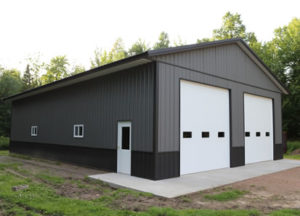
How Much Do Steel Buildings Cost?
One of the primary considerations when investing in a steel building is the cost. Understanding the average costs associated with steel buildings can help potential buyers budget more effectively and make informed decisions. It’s essential to keep in mind that while there are average costs, specific prices can vary depending on various factors like location, customization, type, and more.
Average Cost Per Square Foot: As of my last training data in 2021, on average, a basic pre-engineered steel building costs anywhere from $16 to $20 per square foot. This price typically includes the building kit itself, and additional costs come into play when you consider other factors.
Factors Influencing Cost
- Size and Type: Naturally, the larger the building, the higher the overall price. However, on a cost-per-square-foot basis, larger buildings generally cost less than smaller buildings. This is due to economies of scale. For example, a 10,000-square-foot building might cost less per square foot than a 5,000-square-foot building.
- Customizations: Any personalization, such as adding windows, doors, internal walls, or specialized finishes, can increase the cost. Other customizations like insulation, special roofing, or ventilation systems, can also impact the price.
- Foundation and Labor: The cost provided earlier is for the steel building kit itself. Installing the building will involve additional costs, primarily the foundation, which can vary based on the type and location. Labor costs can range widely based on your location and the complexity of the project.
- Location: Prices might vary based on your geographical location, due to differences in labor costs, transportation fees, and regional price adjustments. For instance, erecting a steel building in a metropolitan area might be more expensive than in a rural setting.
- Accessories and Add-Ons: Think about gutter systems, downspouts, and skylights. While they may seem minor, they can add up, especially if you’re opting for premium choices.
- Regulatory Costs: Depending on the local regulations, you might need to spend more on ensuring the building meets specific energy efficiency or safety standards. Permit fees can also add to the overall cost.
It’s always recommended to request detailed quotes from multiple suppliers to get a clearer picture of the potential costs. Ensure these quotes break down every cost element, so you can compare them accurately and identify any potential hidden fees.
While the average cost of steel buildings gives a foundational idea, it’s crucial to delve deeper and consider all influencing factors for a comprehensive budgeting process.
COMPARE QUOTES
Leave a Reply